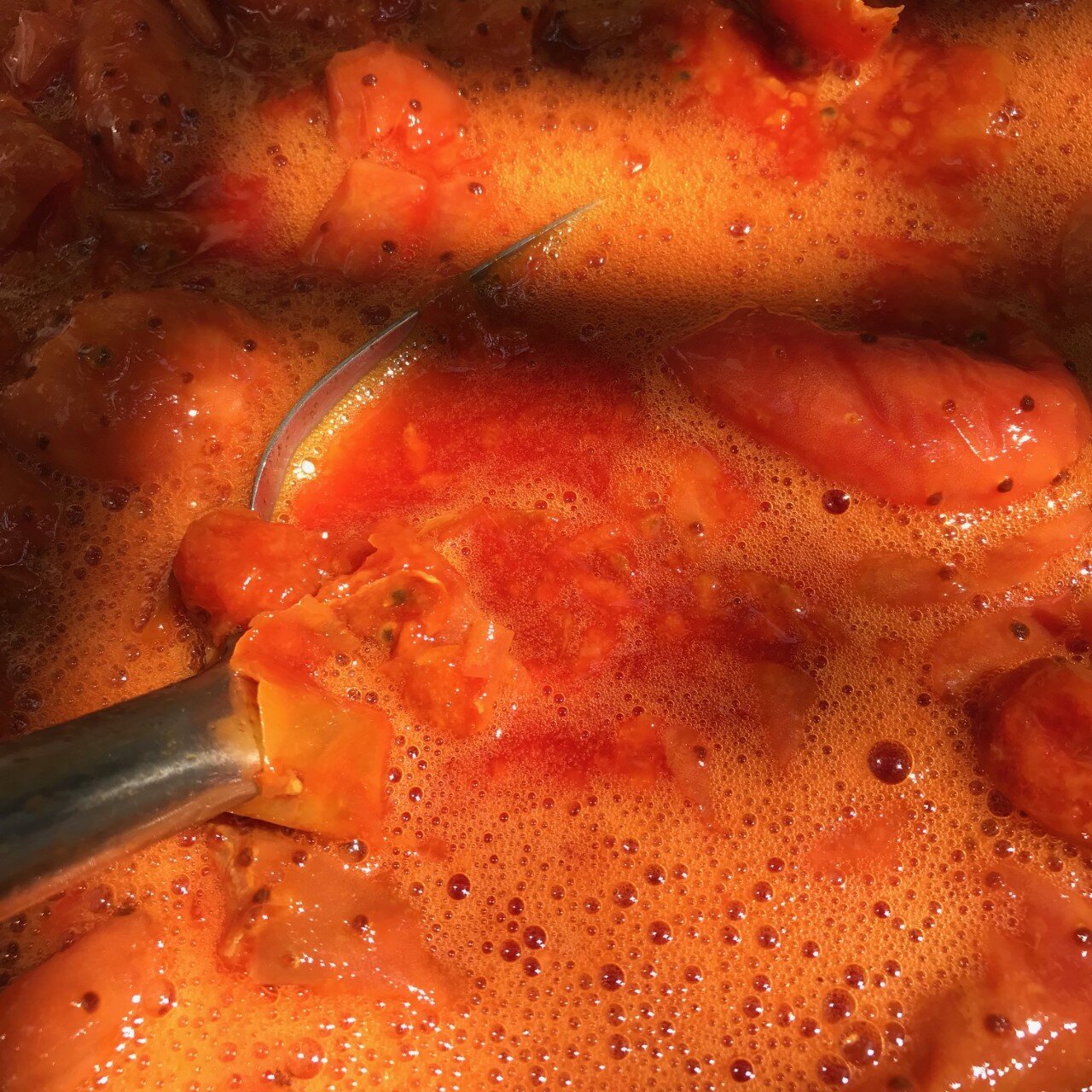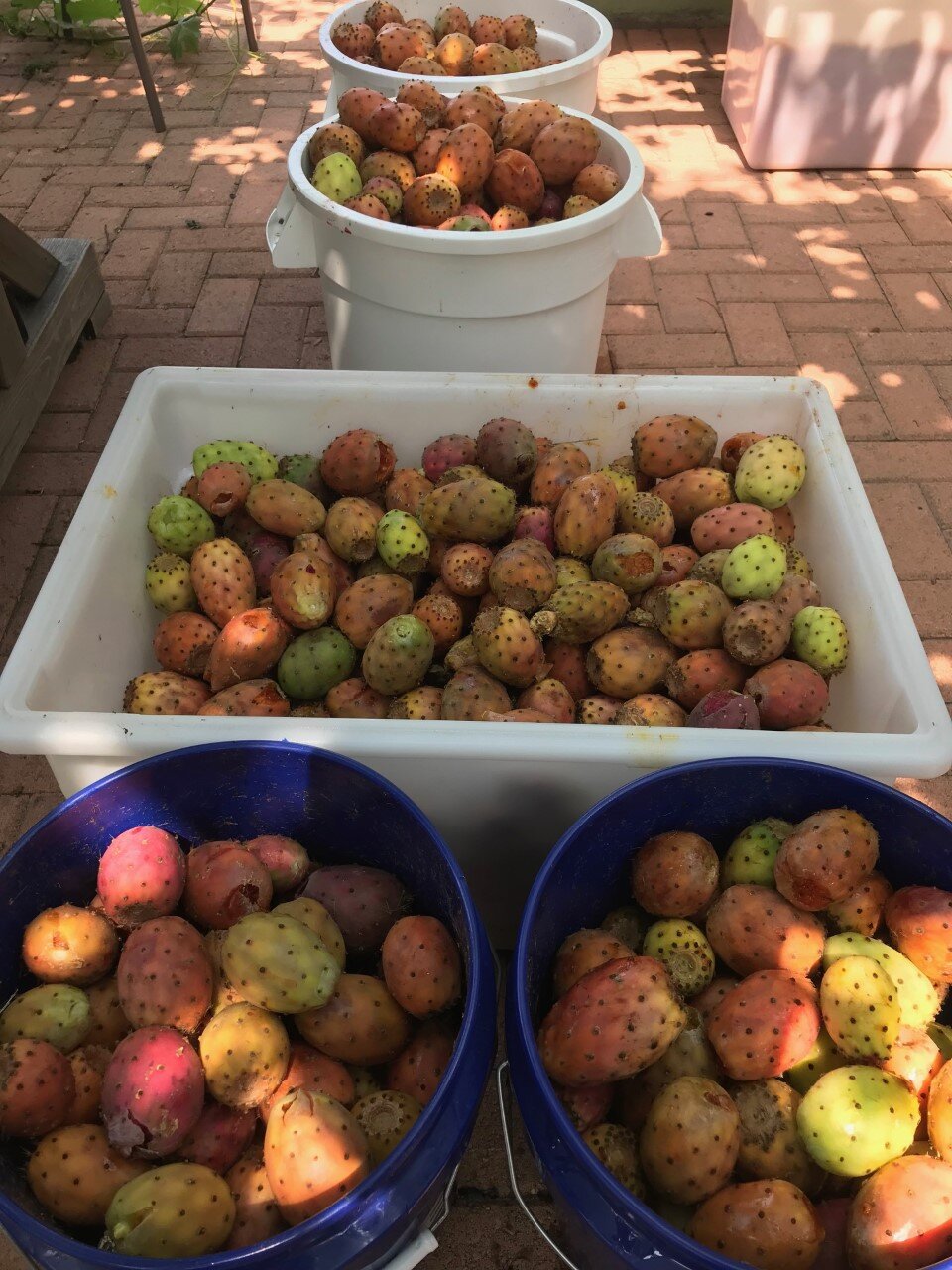The Centralas Prickly Pear Odyssey
I wanted to make wine with prickly pears this year, but there was one major obstacle: I didn’t know where to find them. Thus began a search - no, a journey… nay, a quest – that resulted in this story of a wondrous discovery.
What started as a search for prickly pears became a quest through history, culture, and the soul of wine itself.
Yes, I’d passed many patches of the cactus along the coast as we drove to the Sunday morning Malibu Farmers Market, and as we made wine deliveries throughout Malibu. But these were scrubby little opuntia littoralis, or coastal wild prickly pears, with large needles and small fruits. After a few exploratory hikes through these steep coastal patches I realized that hours of painful foraging would produce firm buttocks but not much in the way of usable fruit.
Opuntia Littoralis - ouch!
I began Googling.
My internet searching also produced scant results. For days I tried various keywords with no hits, gradually beginning to accept my fate that harvest 2021 would bring a toned bottom and only a token amount of foraged cactus pears.
Then an image search returned a picture of a huge corridor of prickly pears with a caption about a “prickly pear trail.” My senses prickled. Was I on to something?
More investigation placed this trail in a nature preserve in Rancho Palos Verdes. And within that nature preserve there was a… farm?
For those of you who aren’t familiar with Rancho Palos Verdes (RPV as we locals refer to it), it is the peninsula that forms the south end of the Santa Monica Bay, and it is the home, primarily, of bazillionaires. The high bluffs of RPV jut out into the Pacific Ocean and provide sweeping, multi-million-dollar views of the entire bay, Catalina Island, and the bosom of the Pacific. It isn’t uncommon to see whales breeching, and dolphin pods cavorting… and mansions. Trump (yes, the former president) owns a resort on the cliffs of RPV. You get the picture.
What RPV does not have is farms.
Yet, there it was, on satellite imagery, just above the cliffs at the very tip of the peninsula, and not too far from Trump’s resort, the neat rows of a few acres of cultivated land.
Why did a farm exist here? And why did it have prickly pears?
The answer to those questions is why this story became more than a search, and even more than a journey of discovery.
Long ago, before RPV became populated by the uber-wealthy, it was a patchwork of farms that were leased by many Japanese-Americans (leased because they were legally prevented from ownership as immigrants). This beautiful coastal pastoral life came to an abrupt end for these people during WWII when they were forcibly removed from their farms and placed into internment camps.
After the war, many were never able to return to their homes and their farms. That life for them and their children had ended forever.
Blood and thorns.
One man, James Hatano, who served in the US Army during WWII, found his way to RPV after his military service, and the war, ended. He leased some Army-owned land, and began farming. A much more complete telling of his story is found here:
https://www.latimes.com/archives/la-xpm-2009-aug-21-me-lastfarmer21-story.html
That farm is now the last farm on RPV.
The farm has no online or public presence, so there was no way to contact the farm directly. I knew it existed, but not how to find it or find out if the prickly pears were usable.
So I called the City of RPV, who holds the current lease on the land.
After what you can probably imagine was a strange phone call… “Um, I’m trying to get in touch with the farm that you lease to a guy who grows prickly pears because I want to make wine from them…” I was surprised when only a day later I got a call back with a phone number for a man named Martin.
Years ago, Martin Martinez, a long-time employee of Mr. Hatano, convinced Hatano to diversify and plant prickly pears on what was otherwise a flower farm. For a time, they sold the beaver-tail-shaped cactus pads – nopalitos – to Mexican markets and consumers, but those markets diminished.
Time passed, and so did Mr. Hatano. A living history disappeared into the ocean mists, yet the prickly pears continued to grow and mature.
Mr. Hatano’s son continued the lease of the land with the City of RPV, but he had little interest in farming. So he left Martin to run the farm pretty much as he saw fit.
There isn’t an address for the farm. So I typed in the name of the adjacent park, also owned by the City of RPV, into my maps app to get a general direction, figuring I would be able to bumble my way into the farm once I got close enough. As the app returned directions, I discovered something amazing.
The way to get to the farm was to take Crenshaw Boulevard, which passes two blocks from my house and is the reason our neighborhood has its name, all the way south to its terminus on the bluffs of RPV overlooking the ocean. Crenshaw Blvd provides a direct through-line from the notorious neighborhoods of South Central to the home of the 1% and some of the most valuable real estate in LA County… and a one of a kind farm.
The farm has a hidden driveway. I drove in literal circles around it several times before parking along the roadside and hiking through the brush in what I thought was the general direction. I broke out onto a dusty drive. I climbed a rise and turned a corner.
And there it was. Like a fabled secret orchard. No… not like one. An actual one.
Martin was harvesting sunflowers on the slope above me. The mists of the marine layer were drifting up the cliffs from the ocean below. The afternoon sunshine was just breaking through, haloing Martin and illuminating acres of mature prickly pear orchard, standing taller than me, laden with green pears. And these were the kind that had only a few tiny spines.
My heart began to beat faster.
“I’m the guy who called about the tunas,” I called out as an introduction. “Tuna” is the Spanish name for the prickly pear fruit. Don’t worry, it’s just an accident of language. They don’t taste fishy.
Martin straightened up and began walking down a row of flowers. I headed in the same direction so we’d intersect. For someone who spends a lot of his life bending over planting and harvesting things, Martin’s posture is perfectly straight, like one of those postures that makes you feel like you’re slouching even when you aren’t.
He greeted me kindly, if bit incredulously. But as soon as he saw my fascination with him and his work, he opened up and began to share his pride in the life he had created here.
As is so often true, no matter how amazing a place is it’s the people who make it special. Martin spent almost every day of his life for the last 40 years, from 6am to 6pm on this little spot of paradise. I couldn’t help but feel a little jealous of his life as he showed me around.
He planted every one of the innumerable prickly pear… trees?... over several acres of the hillside. He irrigated them minimally at first, but now they thrive without any irrigation, plump and abundant. They have spread too, across the hillside beyond the borders of the farm, meeting other patches of wild prickly pears coming down from above.
The farm is organic, perhaps not certified, but has never needed any outside inputs. He uses dead flowers in the corridors between the cactus. That’s their mulch fertilizer.
“They’ll be ready in October,” Martin said of the prickly pears.
I gave him my number and said, “Mucho gusto.”
“Igualmente,” he said.
This is probably a good point to explain why I wanted to work with prickly pears in the first place.
California has once again entered extreme drought conditions. This has come far too soon after the last major drought. It has become likely that we will live to see a time when our survival is at stake due to water availability.
This is something we want to talk about with anyone who will listen.
The prickly pear is a native cactus that thrives with our limited rainfall, marginal soils, and extreme heat. They were a food and beverage source cultivated for thousands of years by the first humans who populated this land.
As we try to bring Centralas ever closer to a business that is fully ecologically integrated into our eponymous land of Central Los Angeles South, using a fruit that literally grows wild in the natural areas within walking distance from our house just makes sense.
And as we intend to blend the prickly pears with local white grapes that were originally imported from Europe, there is a symbolism that we find too important to ignore.
Taste the prickly pear rainbow.
Also, have you seen the color of the fruit? They’re some of the brightest colors you’ll find anywhere in nature. Hot magenta pink, neon yellow orange. They are shockingly, flamboyantly beautiful. If we could capture even a hint of this in a wine, we’d be thrilled.
Understanding this background significance of the prickly pear itself to the kind of winemaking we want to promote with Centralas, you may begin to understand how excited I was to discover this magical, one-of-a-kind orchard with its own cultural and historical significance and uniqueness.
In mid-August, Martin called. “The tunas are ready.”
“I thought you said October,” I said.
“Too much heat,” Martin replied. “The birds are already eating them.”
And so, our first prickly pear harvest from the Hatano farm commenced. You can see the results in the photos below.
One amazing thing I’ve discovered is that every prickly pear tastes different. Fresh, they have a rainbow of flavors to match their colors.
But I’ll be honest… picking prickly pears is a lot more painful than picking grapes. Even using tongs and gloves and layers of clothing, I’ve had cactus spines in nearly every part of my body. The spines are barbed and thin as hair. If you accidentally brush one of the fruit, however lightly, you’ll be covered in spines. I’ve literally had spines in my gums.
They usually aren’t as much painful as annoying. I try to look on the bright side: free acupuncture.
There are still a lot of unknowns. There aren’t any local experts on fermenting prickly pears. I’m learning on the job.
And the final decision will rest with you – whether you think the wine we make tastes great or not. I can guarantee that it will taste like nothing you’ve ever drunk before.
But the fact that we are making wine from an orchard that is the only one of its kind in the world, with a history as rich as the red soil from which the prickly pears grow, and that is literally down the street from our house, is enough for now for me to feel extremely grateful and humble to be part of something much larger than wine… which is what we always wanted for Centralas.
It may even be enough for me to be happy for every one of the prickly spines that are stuck in my taut glutes.
Cheers!
Adam






